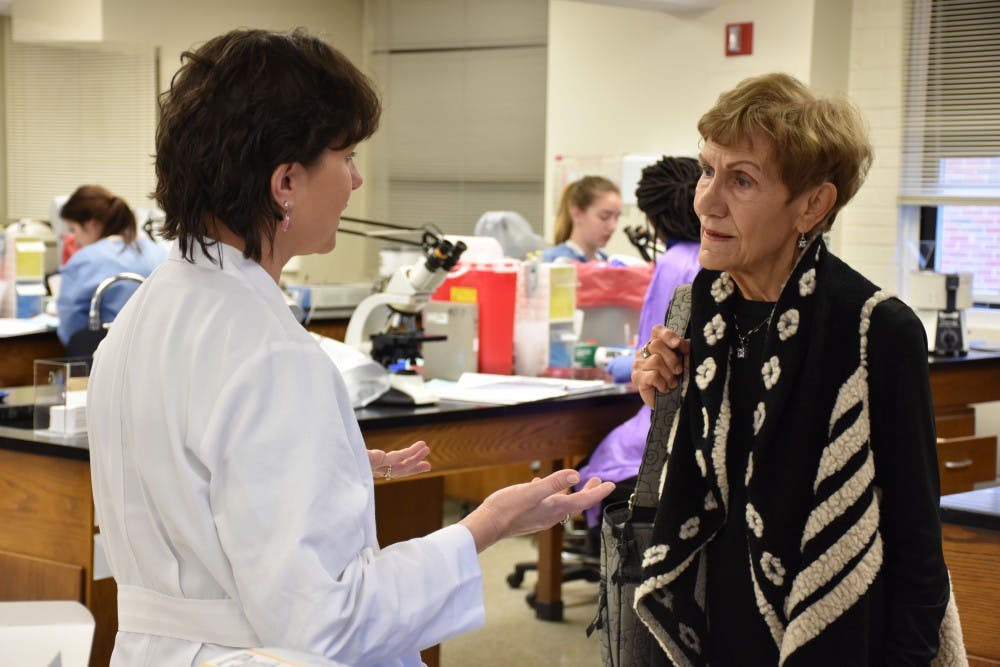Cole grew up in Pembroke, a small Lumbee town that her family rarely left. The town had Lumbee-owned businesses including a shoe store, movie theater and grocery store, which Cole’s father encouraged his family to patronize whenever possible.
“I didn’t really experience too much racial objections because we simply tried to stay away from things we knew would intimidate us,” Cole said.
Though she had some experience being at Pfeiffer, a non-Lumbee school, Cole grew up attending schools with other Native American students. She said she was treated just like her fellow students and rarely talked about Pembroke unless somebody asked her if she was Native — which happened occasionally, since “Lowry” was a traditionally Lumbee name at the time.
“None of my friends, I don’t ever remember holding against me,” Cole said. “Now maybe that was where I went or the friends that I chose, who were very kind and considerate. Even if they did, though, they’d say ‘So what? You look just like one of us, you act just like one of us and we think you’re one of us.’”
University historian Cecelia Moore said UNC students were likely more accepting of Native American students than University officials because they were not as concerned with the legality of admitting them.
Admissions Segregation at UNC
The laws officials used to regulate whether Native American students could attend the University often differed based on their appearances, Moore said. Native Americans who looked white had a greater chance of being admitted than those who looked like they could be Black.
“The Lumbees themselves called themselves Native Americans, but the white authorities who were trying to figure out how to apply segregation struggled with sometimes deciding they were African American, sometimes white, sometimes not,” Moore said.
Lumbee Native Americans were especially hard for officials to classify because they did not have an official tribal designation from the government. When Henry Owl from the Eastern Band of Cherokee was admitted to UNC in the 1920s, Moore said he was treated somewhat like a foreign student applying.
Moore said the decisive move allowing Native Americans to apply to UNC came in 1951, when five Black students enrolled in the law school and, in effect, desegregated all graduate and professional schools.
Being native on campus today
More than 60 years after Cole graduated, Native American students make up less than 1 percent of the UNC student body today.
To get the day's news and headlines in your inbox each morning, sign up for our email newsletters.
Lowery, who majors in American Indian and indigenous studies, said issues still exist for Native students at UNC. He said these include cultural appropriation with costumes at Halloween, as well as underrepresentation in higher education.
“It’s hard for a lot of Native students to actually be able to attend college,” Lowery said. “They come from rural communities where they don’t oftentimes receive the best education, which isn’t their fault, but I think we’re underrepresented in higher education.”
When Lowery tells his peers he is a Native American student, he said he tends to receive ill-informed questions such as “What percentage are you?” and “Do you guys still live in teepees?” This experience is part of what motivates him to educate people about his culture.
Because of low representation of Native Americans in higher education, Lowery said it inspires him to see the success Cole has had as a Lumbee who graduated from UNC.
“Having those role models to look up to as Native students is really important for us,” Lowery said. “We can look at her and think ‘She made it. She did it. She accomplished these things during her time here.’”
arts@dailytarheel.com
@maevesheehey



